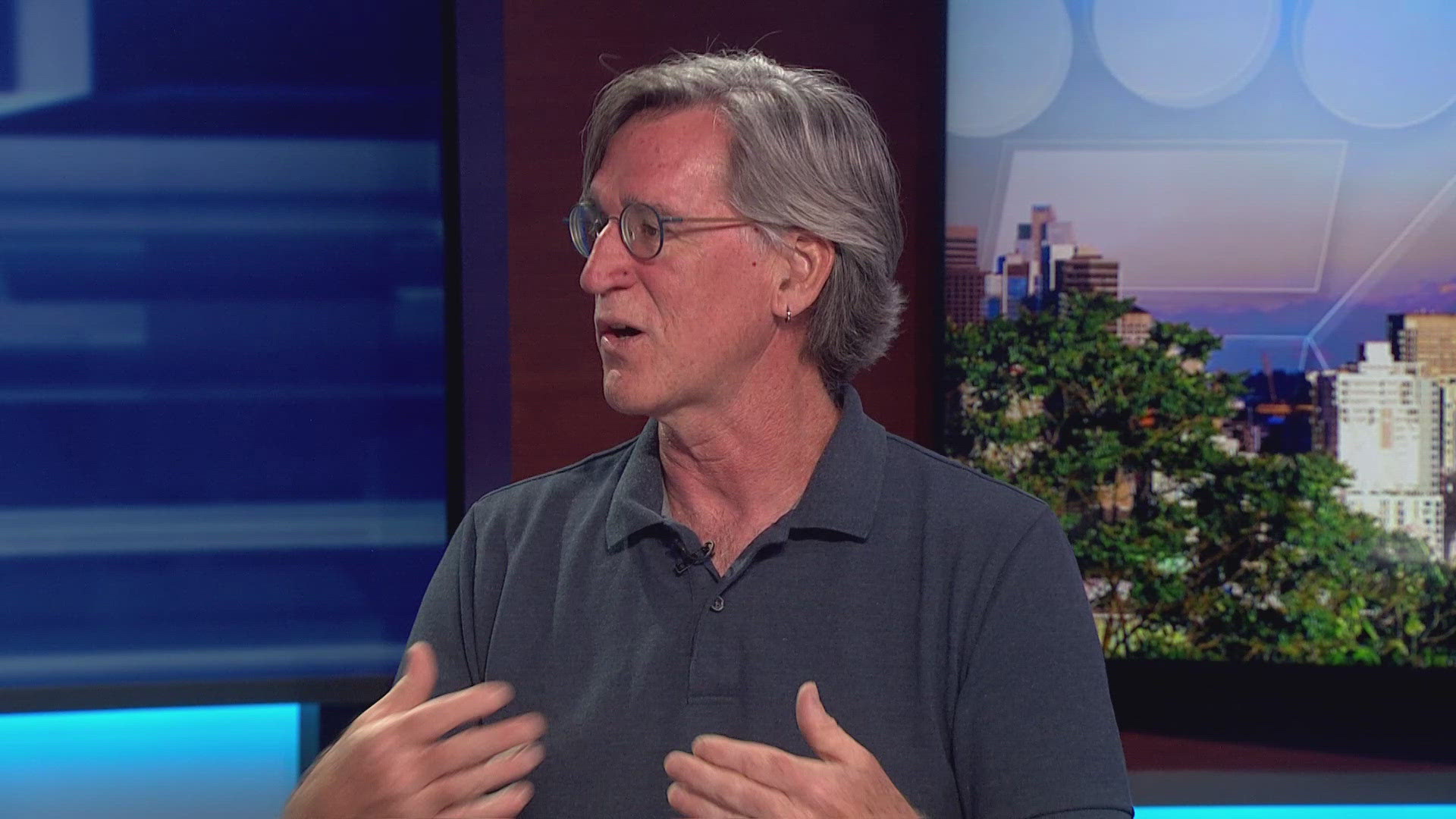SEATTLE — A swarm of earthquakes more than 100 miles off Vancouver Island is not an indication of the "big one," but it does show the Pacific Northwest is still very much seismically active.
A magnitude 6.4 quake shook about 120 miles off Vancouver Island on Thursday. It was the largest yet in the swarm of quakes that began in early July and the largest to strike the region this year, according to the United States Geological Survey.
Possibly most telling of how powerful the quake on Thursday was: It was the first time the ShakeAlert system has been activated for people in Washington state, according to Harold Tobin, the director of the Pacific Northwest Seismic Network. The warning system was triggered around Neah Bay and along the Olympic Coast.
An alert is issued to people with the cellphone app for magnitude 4.5 quakes or higher. Learn more about the thresholds here.
The quakes are occurring near the Juan de Fuca Ridge. Tobin said the area has been "very productive" when it comes to creating fairly large quakes. However, they're far enough offshore that people rarely feel them. If a magnitude 6.4 quake occurred inland, it "would really shake us" and could cause damage, Tobin said.
Take the 2001 Nisqually quake, for instance. The 6.8 earthquake just north of Olympia shook western Washington and beyond, damaging buildings and infrastructure and injuring about 400 people.
Before that, the region experienced a magnitude 6.5 in 1965 and 7.1 in 1949. The quake in 1949 killed eight people. In 1965, the quake was blamed for seven deaths.
So what's occurring more than 100 miles off the coast right now is far from what we would experience on land.
"But it is telling us the plates are moving," Tobin said. "The system is active and alive."
Tobin noted the swarm of quakes does not change the imminence of a megaquake, nor does it reduce the chances.
Swarms of these quakes often resurface conversations around the "big one," a magnitude nine quake that occurs every 250 years on average, with highly variable intervals. This megaquake will be connected to the Cascadia Subduction Zone. When it goes off, shaking could last five minutes or longer and is expected to cause widespread damage throughout the Pacific Northwest.
A map released by the United States Geological Survey earlier this year showed the likelihood of a damaging quake in the next century, with the Puget Sound region being what Tobin previously called a "bullseye of seismic hazard."
However, Tobin said at the time of the map's release it's impossible to say when the quake will occur.

